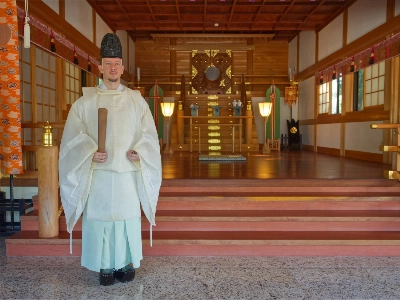Aiko Utsumi felt anger when she heard the news about the irradiation of the fishing boat Fukuryu Maru No. 5 in the South Pacific during a U.S. hydrogen bomb test March 1, 1954.</PARAGRAPH>
<PHOTO>
<TABLE WIDTH='250' ALIGN='RIGHT' BORDER='0'>
<TR>
<TD><IMG ALT='News photo' BORDER='0' SRC='../images/photos2007/nn20071031f1a.jpg' WIDTH='250' HEIGHT='333'/></TD>
</TR>
<TR>
<TD><FONT SIZE='1'><B>Visitors to the Daigo Fukuryu Maru Exhibition Hall in Tokyo look at letters from children sent to Aikichi
Kuboyama, the radio operator of the Fukuryu Maru No. 5, which was irradiated by a U.S. hydrogen bomb test
in 1954.
</B> KYODO PHOTO</FONT></TD>
</TR>
<TABLE>
</PHOTO>
<PARAGRAPH>'As I came to know the details of the atomic bombings of Hiroshima and Nagasaki, the irradiation of the Fukuryu Maru and its crew members made me feel awful,' said Utsumi, who at the time was in her first year at a Tokyo junior high school.</PARAGRAPH>
<PARAGRAPH>Together with schoolmates, Utsumi sent a letter of sympathy to the family of Aikichi Kuboyama, the chief radio operator on the 140-ton trawler. He was hospitalized following the H-bomb test on Bikini Atoll and died six months later at age 40 — the first person in the world killed by a hydrogen bomb.</PARAGRAPH>
<PARAGRAPH>'I hope the people of the world can live peacefully without repeating such a tragedy,' Utsumi wrote in the Sept. 4, 1954, letter. 'Given the reports that Mr. Kuboyama has fallen into serious condition, I feel once again the dreadfulness of the hydrogen bomb.'</PARAGRAPH>
<PARAGRAPH>Kuboyama, who became a symbol of the irradiation disaster, and his family received more than 3,000 letters from across Japan during and after his struggle with radiation disease. Half were from schoolchildren.</PARAGRAPH>
<PARAGRAPH>His dying wish: 'Please make sure that I am the last victim of a nuclear bomb.'</PARAGRAPH>
<PARAGRAPH>Now 100 of the letters written by elementary and junior high school students, including the one from Utsumi, are on public display at the Daigo Fukuryu Maru Exhibition Hall in Tokyo, where the preserved vessel, also known as the Lucky Dragon, is exhibited, so visitors can see how children dealt with the incident.</PARAGRAPH>
<PARAGRAPH>Many of the children's letters show disdain for nuclear weapons. One girl noted: 'It is unreasonable to lose one's life because of other countries' circumstances. I would like to make efforts to get rid of atomic . . . bombs.'</PARAGRAPH>
<PARAGRAPH>An anonymous letter from a girl in Tottori Prefecture addressed to Kuboyama's oldest daughter, Miyako, who was 9 at the time, reads: 'I lost my father due to the previous war, and your father was sacrificed for science.'</PARAGRAPH>
<PARAGRAPH>She concluded the letter, 'That's why I hate science and war, but I have to say we must seek a way for peace without spreading hatred.'</PARAGRAPH>
<PARAGRAPH>The Bikini Atoll incident, in which the blast from the U.S. 'Bravo' hydrogen bomb irradiated residents of Rongelap Island and the 23 crew members of the Fukuryu Maru, occurred when Japan was still rebuilding from the devastation of the war.</PARAGRAPH>
<PARAGRAPH>'It provided an opportunity for children at the time to turn their eyes to the world situation,' said Kazuya Yasuda, curator of the exhibition hall, which also features photos and other documents related to nuclear arms programs.</PARAGRAPH>
<PARAGRAPH>'The letters indicate the children talked about Bikini Atoll, radioactive ash and Mr. Kuboyama with their teachers in class and with their families at home,' he said.</PARAGRAPH>
<PARAGRAPH>All of the 3,000 letters were kept by Kuboyama's late widow, Suzu. Volunteers at the hall took more than three years to sort through them for the exhibition.</PARAGRAPH>
<PARAGRAPH>After sending the letter to Kuboyama, Utsumi maintained her interest in social and peace issues.</PARAGRAPH>
<PARAGRAPH>Now 66, she is chairwoman of the Peace Studies Association of Japan, which groups about 1,000 researchers, schoolteachers, journalists and members of nongovernmental organizations.</PARAGRAPH>
<PARAGRAPH>She is also a professor emeritus at Keisen University in Tokyo.</PARAGRAPH>
<PARAGRAPH>Over her lifetime, Utsumi has participated in various grassroots campaigns while researching discrimination against Korean residents of Japan and women, and while pondering ways for Japan to make amends for its colonial rule and wartime sexual slavery.</PARAGRAPH>
<PARAGRAPH>'I think my current activities have their roots in my childhood memories, including those of the Occupation and the Bikini Atoll incident,' she said.</PARAGRAPH>
<PARAGRAPH>The letters will be exhibited until Dec. 23 as a special program to mark the 60th anniversary of the building of the Fukuryu Maru, which was based in Yaizu, Shizuoka Prefecture.</PARAGRAPH>
<PARAGRAPH>The vessel was built when Japan was still suffering postwar food shortages. 'It is said that about 800 wooden fishing boats were operating in Japan, but the Fukuryu Maru is the only one still in existence,' Yasuda said.</PARAGRAPH>
<PARAGRAPH>'While the Fukuryu Maru –
the threat of nuclear bombs, it also has an important place in the history of Japan's wooden fishing boats," he said.
The Fukuryu Maru was used as a training vessel for 10 years by Tokyo University of Fisheries after its radioactivity was confirmed two years after the blast to have fallen to safe levels. It was abandoned in the 1960s at Yumenoshima, at the time a vast Tokyo Bay garbage dump.
The vessel was on the verge of sinking when a campaign was launched to raise money to preserve it.


















With your current subscription plan you can comment on stories. However, before writing your first comment, please create a display name in the Profile section of your subscriber account page.